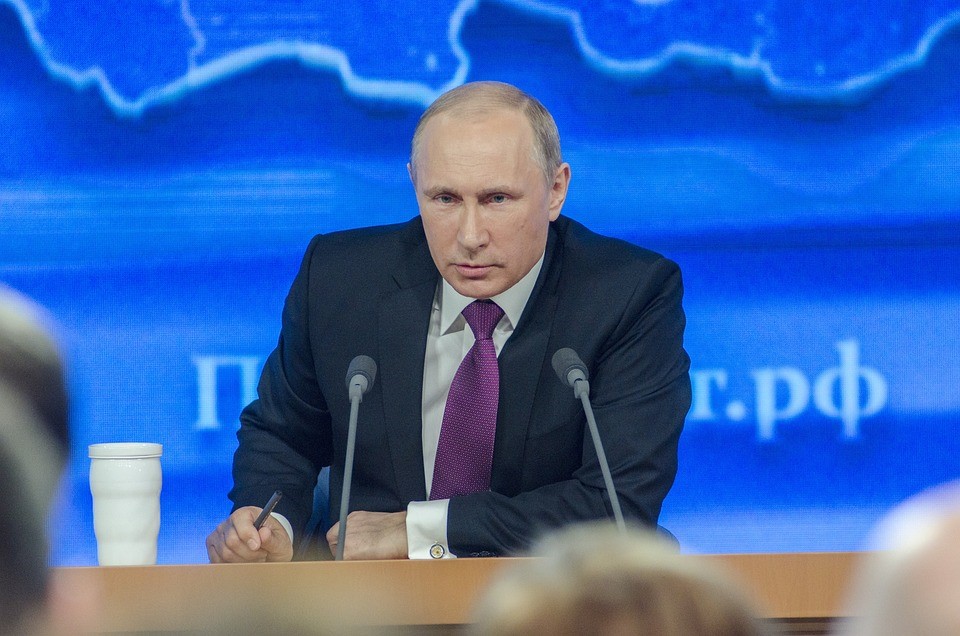Putin’s not giving up. That’s the consensus among Russia watchers in the intelligence community in Washington. The news in recent days reported on preparations by Kiev for the upcoming Ukrainian offensive to retake territory now in Russian control. The Russian General Staff responded by reorganizing two new military districts surrounding Moscow and St. Petersburg, an Azov naval district and on its western border, created two new joint forces. President Putin effectively scrapped the decade-old reforms instituted by Anatoly Serdyukov and restored “Soviet patterns of military organizations” that “puts Moscow in a position to wage offensive war along a broad front from Finland to Moldova,” according to Paul Goble of the Jamestown foundation. Putin, cornered, may be more dangerous today than a year ago. He may see this move as a last chance to save some part of the Russian Federation.
The new Russian plan, first announced by Defense Minister Sergei Shoigu last December, flushes out in detail changes in the Russian command structure. Politnavigator.net, on June 5, says out that Russians commanders are not happy with Serdyukov’s reforms that had eliminated the Moscow and Leningrad military districts and forced tank units to focus instead on regional structures. According to reports, current commanders view the Serdyukov doctrinal and organizational reforms as forcing the Russian military in a defensive position that precludes easily launching an offensive operation.
Military officers, according to sources in Washington, point to a number of reasons for the change. NATO’s expansion to include Finland, which borders Russia on the northwest, is given as a driving force. The degradation of Moscow’s relations with the West, that may lead to wider war in Europe, also are viewed as contributing factors for the realignment. Reforms, when mentioned in open sources in Russia, typically cite the urgency of the war in Ukraine. The reason may be deeper. Putin needs support at home and questioning a former Defense Minister adds to the credibility of Putin and his current defense minister.
Kremlin officials, according to analysts, may see the long-term survival of the Russian Federation as questionable. On June 3, military.pravda.ru says that there is a need to redesign Russia’s military not only in response to NATO expansion but also due to an increasingly offensive-minded Western alliance. “The army that Russia sent to Ukraine in February 2022 had no experience in conducting large-scale offensive military operations. The Crimean experience of ‘polite people’ did not work, the ‘keys to Kharkov’ were not handed over to the army,” says Pravda.
Russia is returning to an offensive-oriented military model that looks significantly different than it did in March 2022. Moscow carried out an initial mobilization that conscripted up to 400,000 contract soldiers. It built and maintained a layered defense, and according to Pravda, established interactions at the junction lines of units. The advanced units at the company level, it adds, are now saturated with drones and electronic warfare equipment. While some of this may be Russian propaganda, analysts say that Soviet army-armored vehicles and tanks have been reactivated to carry out offensive operations. Analysts point out that Russia is not equipped to win a war in Ukraine or Europe but that doesn’t mean it won’t stop attempting to retake positions lost in a Ukraine offensive this summer.
A recent commentary piece by Kremlin critic Anatoly Nesmiyam, blogging under the name “El Murid,” says that “the latest Russian moves are intended to improve the Russian military’s combat capabilities; however, he [Nesmiyan] argues that making these changes while fighting a war will be almost impossible and may compromise the Defense Ministry’s goals,” says Goble. Moscow’s dual goals of expanding the army while also reorganizing it, may make qualitative change impossible. Nesmiyam suggests another more provocative reason for the reorganization may be to protect Moscow itself.
On June 2 Kasparov.ru reports that the Kremlin “already understands that it will be problematic for it to keep the entire country and is preparing for disintegration—or at least rapid regionalization and partial collapse along the periphery.” Russia may be preparing to sacrifice the periphery, if necessary, to save the capital-centric country. Those outside of Moscow may not be happy with the regime’s decision to leave them with fewer resources and on their own.
While it remains a low likelihood scenario, that Putin is designing such a plan, speaks to concerns inside the Kremlin about the questionable future of the Russian Federation. Goble suggests Nesmiyam is overstating the case in the immediate future, but agrees that “the fact that it exists at all means that the likelihood the Kremlin really is planning a broad attack to the west, a possibility Moscow military analyst Konstantin Sivkov treats as a near certainty, is perhaps even greater… And that in turn means that what may appear to some as a minor bureaucratic rearrangement within the ranks of the Russian military may well be a harbinger of far larger and more significant developments.” The worst may still be ahead.
Daria Novak served in the U.S. State Dept.
Photo: Pixabay
